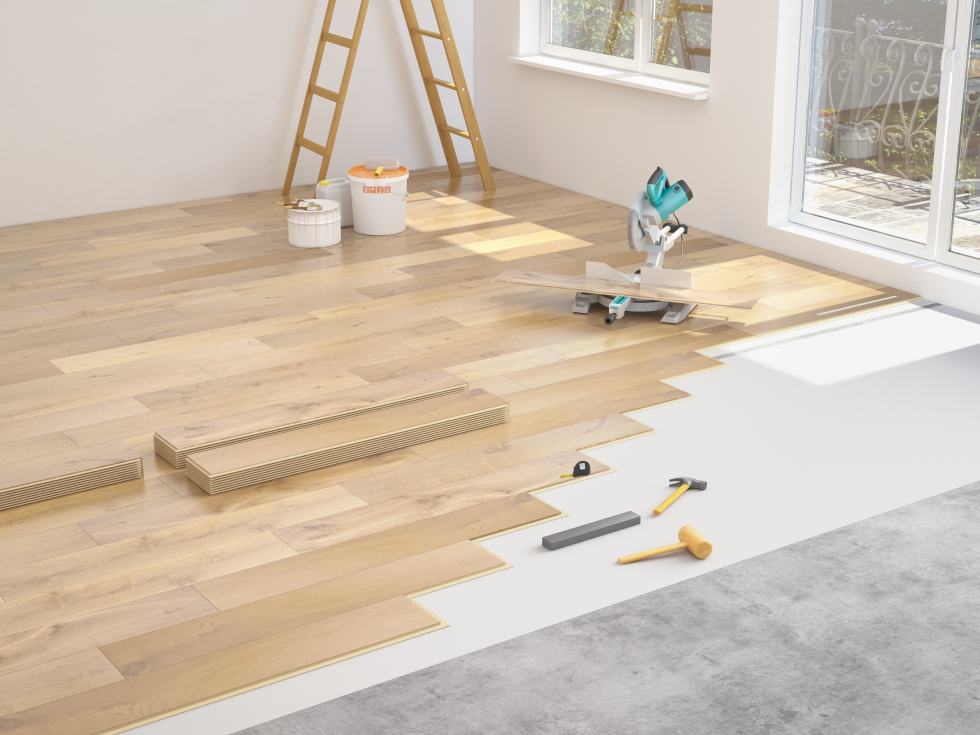Nowadays the floating floor whether it is laminate, engineered wood or vinyl click is very popular. There are unending controversies between DYI & experienced installer supporters and opponents who have to implement these projects. We think that all these debates are based on budget opportunities, trust issues, matter of taste, passion to create something on your own and so on.
In this article, we will address to frequent but avoidable mistakes. It is really possible that your guests cannot tell if the floor has been installed by a professional installer or you. So to be successful follow these instructions:
- 1Right finishing of Door jumps
Undercut door jambs to install the floor under them. Many DIY beginners install the floor around the door frames and casings and then fill the gaps with silicon or wood fillers which will bring to ugly results.
- 2Avoid Buckling
To avoid buckling and contracting your floating floor, leave the proper 1/4 inches gaps (for more than 25 ft areas at least 1/2 inches gaps) along the walls that will be covered by baseboards. If your baseboards are thinner than 1/2 inches, you can cut drywalls in areas more than 25 ft around perimeter of the floors.
In case you are putting the transitions on glue try the floor doesn’t touch glue and still leave some rooms under transitions for free expansion.
- 3Don't block the free movement of floating by heavy Kitchen cabinets.
Try not to install your heavy kitchen cabinets on top of your floating floor. Otherwise by blocking free movements of your floor you can get the bumpy floors later on. If you like the clean finishing instead of shoe bases or quota moulding framing around kitchen cabinet, use tow kicks to finish the gaps at kitchen cabinets.
- 4Design mistakes
Prior installation open 3-4 boxes right away to select from. Laminate and vinyl floors will have the repeated patterns in every 5-10 boards that aren’t recommended to install together. The beauty of hardwood floor in its unrepeatable textures and grains. However, hardwood floors are also required the selection for several reasons: the natural characteristics of wood cause variations in color, grain, knots, etc. Because of these variation the different planks should be mixed up during the installation to get more more natural look. So examine each individual plank before to place it on the floor with the rest.
- 5Lack of thermal acclimatization
As we’ve mentioned, any floating flooring expands and contracts.
Get your flooring inside and let it warm up at least for 48 hours.Do not assume that the floor where was stocked before had the same moisture or humidity that your house has. Cold flooring is fully contracted. By installing it right away you will leave all gaps along the wall for non-expanded floor and overtime the floor will expand and push against your walls and the buckling will be unavoidable. From theses tensions the locks may be cracked or broken and you can get the squeaky floor.
- 6Uneven sub-floor
Over uneven subfloor your floating floor will flex up and down, and the end result will be damaged locking system that might cause gaps. Industry standards specify that the surface of the subfloor must be flat to within 3/16” in a 8 ft radius.
- 7Wrong underlayment choice
Some suppliers offer free underplays if you buy the flooring material from them. Usually it is a cheap underlay that doesn’t meet proper moisture and sound proof requirements. Most important thing you should now is the installation of the vapour barrier over concrete subfloor. Any floating floors including vinyl planks will absorb moisture and expand which can lead to flooring buckling and warping. This expansion needs to be minimized with real moisture proof foams. Good underlay will also protect your floors against noises and will hide the small uneveness on subfloor.
- 8Gaps in the bottom of bi-fold doors frames.
Since baseboards are not installed around door frames, the flooring should be finished with zero gaps in these areas.
If it is hard to butt against easiest way to cut the drywall by jamb saw or knife here before flooring install.
- 9The transition between hardwood and carpet is broken.
There are L shape transitions that are designed to separate hard surfaces from carpet. It is fine to install t-cups our reducers for these purposes. Because the carpet is soft the overlap part of laminate or wood t-cups are vulnerable to cracking. It is easy to avoid if the supporting wood strip along the carpet is installed together with t-cup.
- 10Last laminate or hardwood boards along the wall are separated.
This usually happens during clicked wood install when the installers ignore to put T&G glue into locks of final rows along the boards. There is a big chance of unblocking when not all locks are strong and the subfloor along the wall are uneven. Usually this separation happens overtime because of floating floor movement. Baseboards installed over the last boards will not help to keep the flooring boards together. This issue can be easily avoided by putting T&G glue into grooves of last row boards.




